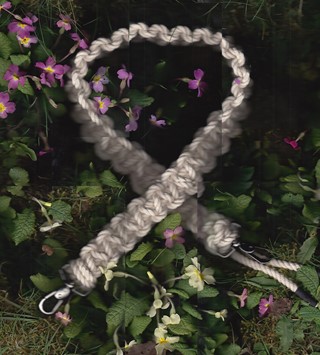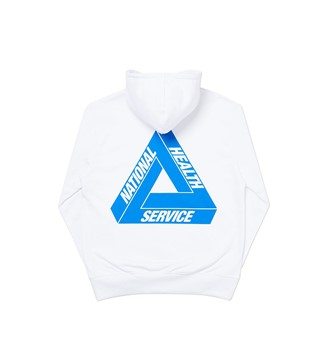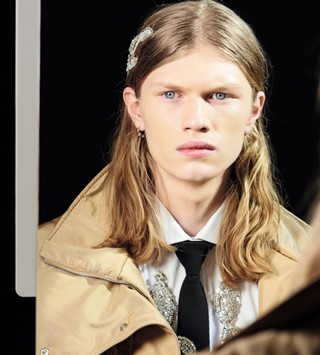Portraits from the Cult London Hair Salon Frequented by Bowie and Gaultier
- TextHynam Kendall
Photographer Mark Lebon remembers the hairdressers founded by his brother and discusses a new book of portraits from the salon, taken by Steve Brooks
Cuts was more than a hair salon, it was a community. Yes, it created Travis frontman Fran Healy’s iconic fin hairstyle (the first cut not done by his mother), and conceived Goldie’s bleached Armadillo, but it was also a place where its star customers – including David Bowie and Jean-Paul Gaultier – mixed with local working-class men and women seeking a safe space, shelter, and, often, a helping hand.
To coincide with the release of the book CUTS, a collection of patron portraits by Steve Brooks which launched at Donlon Books this week, we speak to photographer Mark Lebon. The brother of Cuts founder James and editor of the book, Lebon spent much of the 80s and 90s within the salon walls – here, he reminisces about the “place of waifs and strays” that he was so proudly a part of.
What was the initial motivation of the Cuts salon; what did it set out to achieve?
Mark Lebon: I think it was all a bit confused, really. James just wanted to be rich and famous. His ideas for the salon came from varied places; from his training at Vidal Sassoon (which taught him it was all in the cut), and his role within the punk scene (which taught him you can do anything with a head of hair), to being involved with running art galleries. Cuts wanted to be everything for everyone.
The salon thrived throughout Thatcherism and became a celebrated hub for progressive creativity, sexuality and multiculturalism, a space against intolerance. James actively hired black gay barbers at a particularly racist and homophobic time. How important to Cuts’ identity was this progressive agenda?
Mark Lebon: I don’t think Cuts had a particular agenda save the idea of getting by, making a living, cutting hair, and in the process of that making your clients happy, as that in turn would make ones job as a hairdresser sustainable.
It’s been said that the non-judgemental environment that it cultivated meant that it inevitably became a place for “waifs and strays”, with many people relying on the salon to provide shelter, comfort and support. Is it right to say that it became much more than a salon?
Mark Lebon: Yes, I think “waif and stray” was always a founding ethos of the company.
What is it about the salon environment that leads them to become meccas for communities?
Mark Lebon: There is obviously the therapeutic relationship hairdressers share with their clients, the role of a listening non-judgemental ear. It is also company that’s been paid for, so it has boundaries and has been defined. You are paying for a service, and if the server wants to get his client back they need to perform accordingly. This gives the client a sense of security and control, whereas there aren’t such well-defined parameters when you meet someone in a club.

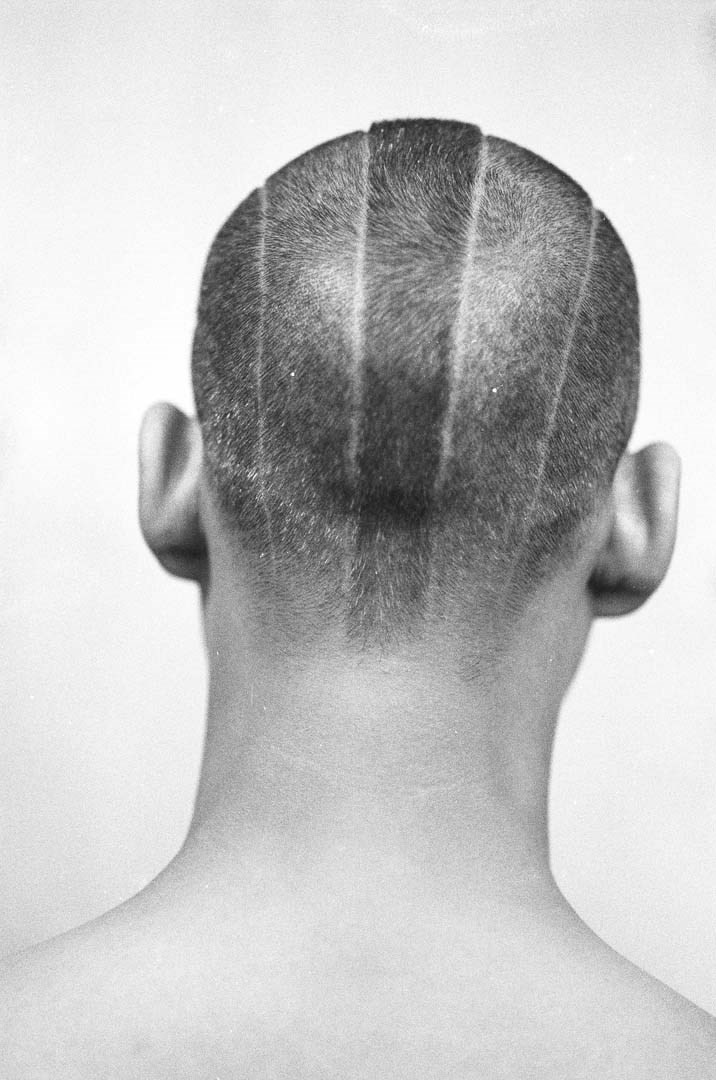
You spent much of the 80s and 90s in and around Cuts, and along with Cuts regulars Neneh Cherry and Judy Blame – you even helped create the Buffalo aesthetic together within those walls. How would you describe your personal experience of the salon?
Mark Lebon: Well, really I was amazed that James had made a business for himself! And it all started with just the one chair in Kensington Market. He was so good looking that he was soon surrounded by other beautiful young people. He was the first doorman on what was the most popular new club on our scene – Gaz’s Rockin’ Blues. Our scene was primarily a committed local London scene, unlike the New Romantic scene that was more from out of town. Working there no doubt helped him draw in a crowd to the salon. And that was followed by him getting a role as Front of House at London’s – and probably England’s – first rap club, The Language Lab. There was a strong sense of belonging in all of these clubs, it was how we networked.
“I think “waif and stray” was always a founding ethos of the company” – Mark Lebon
During the early years of Cuts, you were living in squats (notably with Boy George) and apprenticed as a fashion photographer. After becoming part of the community at Cuts, you realised that your path was better suited to a multidisciplinary practice rather than solely focusing on photography. How did it make you come to this realisation?
Mark Lebon: I definitely wanted to be more involved with the vibrancy, and was not finding it easy to control my creativity in photography. A tiny two-metre-squared space came free next to James’ stall in the basement, so James offered to help with the rent for me to start up a gallery there. Small was still beautiful to me. And after that, I got the whole market involved in putting on events in the biggest space in the market (an old pool hall that was currently unoccupied). We put on three fashion shows there, several DJ sets, a film club and performance art on a Saturday afternoon. The venture was called Arkent, and the gallery space was called Unit A. This moving from photography to a broader spectrum of representing other talent became a pattern in my career and eventually manifested itself as Crunch Productions. It was being at Cuts that sparked it all.


The salon has such an incredibly rich history, how did you choose the narrative and photography for the CUTS book?
Mark Lebon: It’s an all-in warts-and-all approach to the edit selection, which was followed by a no retouching policy. It’s to the extent that we didn’t even tweak the exposure or contrast on any one image. We even made a decision not to use the richness of full colour printing, where five inks are used, instead we just went with the one black ink. We were veering away from the ‘coffee table photography is such a precious art form’ vibe and more towards an anthropological record, believing that there is as much, if not more beauty and integrity in that approach.
“The book is all very focused and committed. For me it has an astounding integrity” – Mark Lebon
As part of the Cuts community, you took many photographs yourself. Did you ever want to include any of your own photography in the book?
Mark Lebon: Though I’d taken many pictures with James over the years, this book was not at all about my relationship with him. The book is all very focused and committed. For me it has an astounding integrity. The ‘one photographer, one subject matter of hair clients in mostly triptychs’ has a sense of purity that would be lost if I’d included my pictures in it.

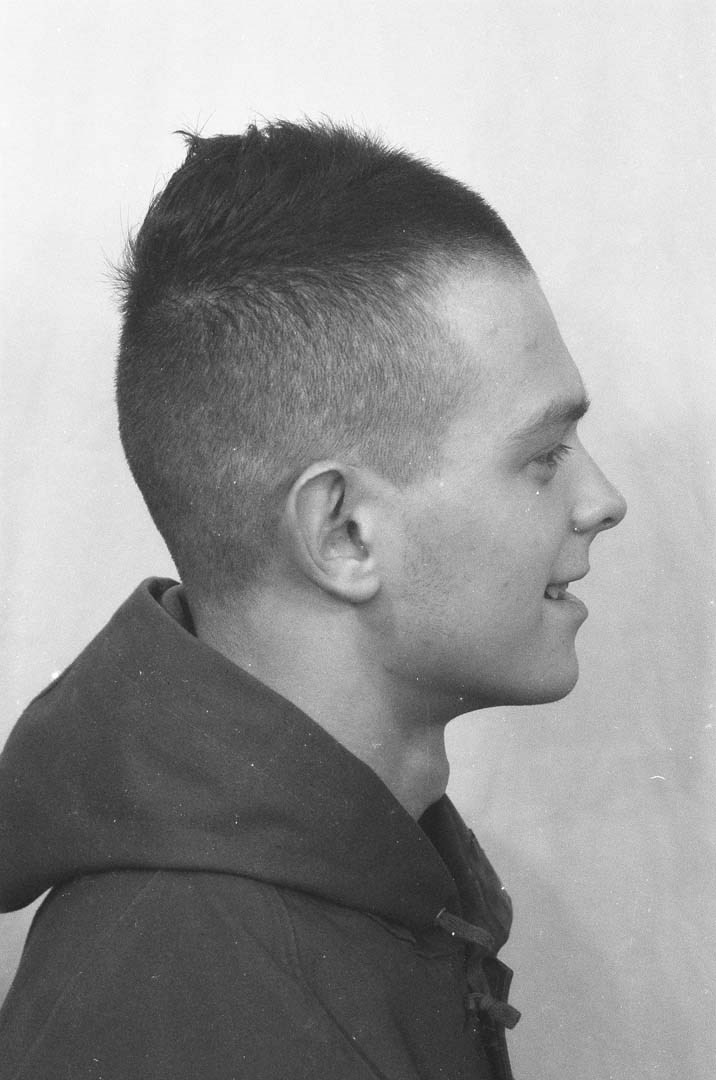
Director Sarah Lewis created a film about Cuts (No Ifs or Buts). As an Australian, and somebody who did not herself experience the salon in the early days, she brings an outsider’s eye. Your brother created the salon, which you frequented yourself, and your son is publishing the CUTS book, so the book is the opposite in that respect: it is an insider’s eye. Was it intentional to have both viewpoints?
Mark Lebon: Though Sarah might have started out as an outsider, after 20 years (which is how long she’s been working on it), that’s obviously no longer the case. She came to me as she knew I would have a big archive of relevant images. There’s a lot of mine in the film, including a film I commissioned Dick Jewell to direct called ‘Headcases’, in which Steve [Brooks, whose photography makes up the book CUTS] asks the hoi-polloi if they want to sleep with him! So there’s a lot of me inside the film. After I’d committed my archive to the film, I introduced Sarah to Cuts fans who ended up becoming Executive Producers and helped with the funding of it. Sarah’s discovery of Steve’s archive was a beautiful area for us to get involved in.
With the book and the film about to come out, what do you want the lasting legacy of Cuts to be?
Mark Lebon: As far as a legacy goes, both for Cuts, the book and film, and myself, I think it’s probably about redemption and emancipation, as Bob Marley would have it.
CUTS is out now. Head here to buy a copy.









